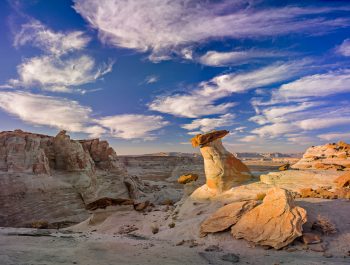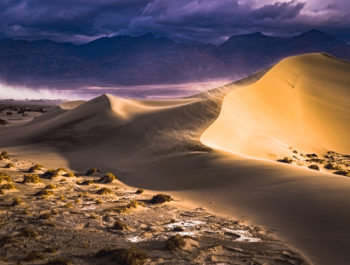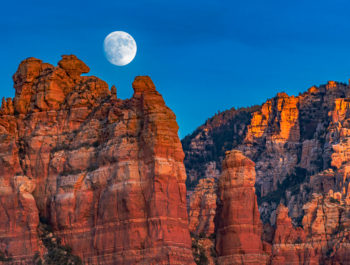Creating Artistic Landscape Photographs Artistic Achievement
Introduction
How do you measure artistic achievement? And what is it anyway, what does it consist of? Is it financial achievement? Are we talking about how much money one earns through photography? Is it technical achievement? Are we talking about how technically perfect one’s photographs are? Is it an artistic achievement? Are taking about how artistically inspired and creative one’s work is?
The fact is the subject is somewhat nebulous. It is also difficult to measure if we step away from quantifiable aspects. It is easy to measure financial achievement because all we need to do is look at how much money we made. Similarly, it is easy to measure technical achievement because all we need to do is look at exposure, sharpness, depth of field, dynamic range, and so on, all quantifiable variables. As a result, technical and financial achievements are often discussed.
It is much more difficult to measure artistic achievement. For this reason, this subject is far less often talked about, in fact, it is often ignored. Why do we not talk about artistic achievement? Is it because it is challenging to measure? Perhaps, however, it is just as important as financial and technical achievements and therefore it should be measured or quantified in some way. If so what ‘measuring stick’ can we use to quantify, or size up, artistic achievement? What unit of measure can we use and is there one available in the first place? What elements can we look at to assess artistic achievement? Which elements do we need to consider and which elements should we ignore?
About Achievement
The need for achievement is human. We all have it. It is present in all human endeavors but it manifests itself differently depending on the endeavor we pursue. In art, the achievement is often sought through awards, sales, number of subscribers, publications, shows, social media presence, etc. These are ‘standard’ achievement ‘measuring sticks’ so to speak. However, as we are going to see, they are neither the only ones nor the most important ones.
The first thing I want to make clear is that there are three categories of achievements in art: artistic, technical, and financial. My goal in this essay is to focus on artistic achievements and to ‘measure’ them if it is at all possible. To do so I need to put technical and financial achievement aside because they are separate from artistic achievement. Financial achievement is how much profit an artist generates through the sale of his photographs. Notice I say profit and not income. Making money is one thing, keeping it and generating a profit, meaning ending up with more money than we started with, is much harder. Technical achievement is how much mastery an artist demonstrates when they create their images. This includes fieldwork (finding locations and capturing images), studio work (processing and printing), and curating work (matting and framing).
Artistic achievement is how much artistic content an artist features in their work. We can see right away that this definition is not as clear-cut as the definitions of financial and technical achievements. With financial achievement, the measuring stick is money, specifically profit. To assess someone’s level of financial achievement all we need to do is look at their profit/loss statement. Did they generate a loss or a profit? And if they generated a profit how much of a profit did they generate?
With technical achievement the measuring stick is technique. All we need to do to assess someone’s level of technical proficiency and mastery is look at how much knowledge and control of the technical aspects of the medium they demonstrate. Can they calculate exposure without looking at their light meter or the histogram on their camera? Do they know how to set software parameters quickly and efficiently? Can they create prints that match what they see on their monitor? Can they mat, frame, and curate their photographs professionally?
As you can see we have measuring sticks for all these aspects of photography. Furthermore, these measuring sticks are not new, they have been used for decades and are well known. I doubt a photographer would challenge these as being inaccurate measuring devices.
Things are not so clear-cut when it comes to measuring artistic achievement. To bring some clarity to the subject let us now look at what can be used to measure artistic achievement.
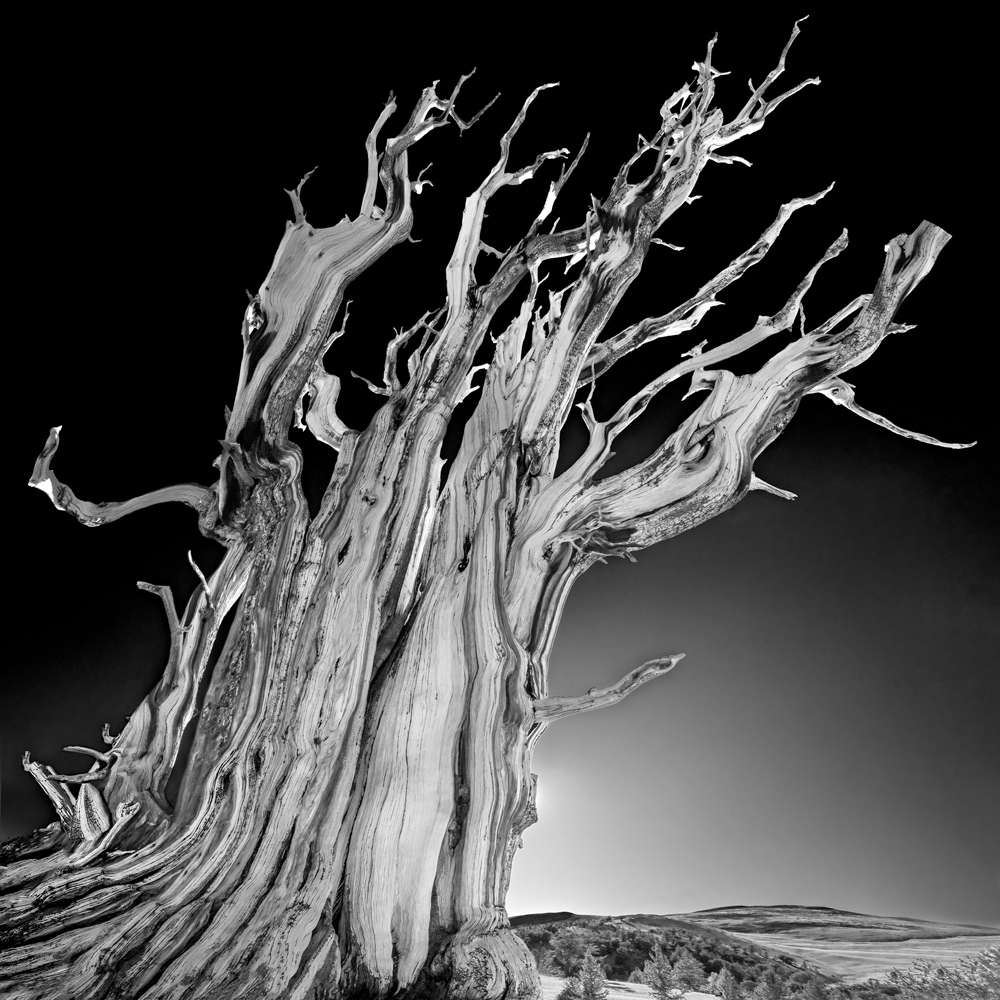
Awards and Social Media Prowess
Awards can be used as a measure of artistic achievement. Similarly being accepted in an artist in residence program, receiving a grant, or winning a competition are certainly all important achievements. So can social media presence. The number of followers we have or the quantity of ‘likes’ we received on Instagram, Facebook, or other social platforms can be used as a measure of achievement. We can also look at the number of newsletter subscribers we have, or at the number of people who read our blog, our RSS feed, or our other web platforms. However, I would argue that, while significant, social media accomplishments such as social media followers, newsletter subscribers, blog readers, and so on are more the result of marketing efforts than the outcome of artistic achievement because people will not come to our web platforms by themselves. Likes, subscriber sign-ups, and other forms of acknowledgments are actions performed not by us but by others. In fact, awards do not manifest themselves spontaneously either. One has to go looking for them. None of these will come to us by themselves. We have to seek them out and this seeking out is the result of our marketing efforts in one form or another.
Recognition
Achievement is closely linked to recognition. Achieving something in art is often tied to having people whose opinion is meaningful to us acknowledge what we have done and recognize our efforts as meaningful. While these are often influential people in the world of art, they can also be customers as well as peers, teachers, family members, spouses, or significant others.
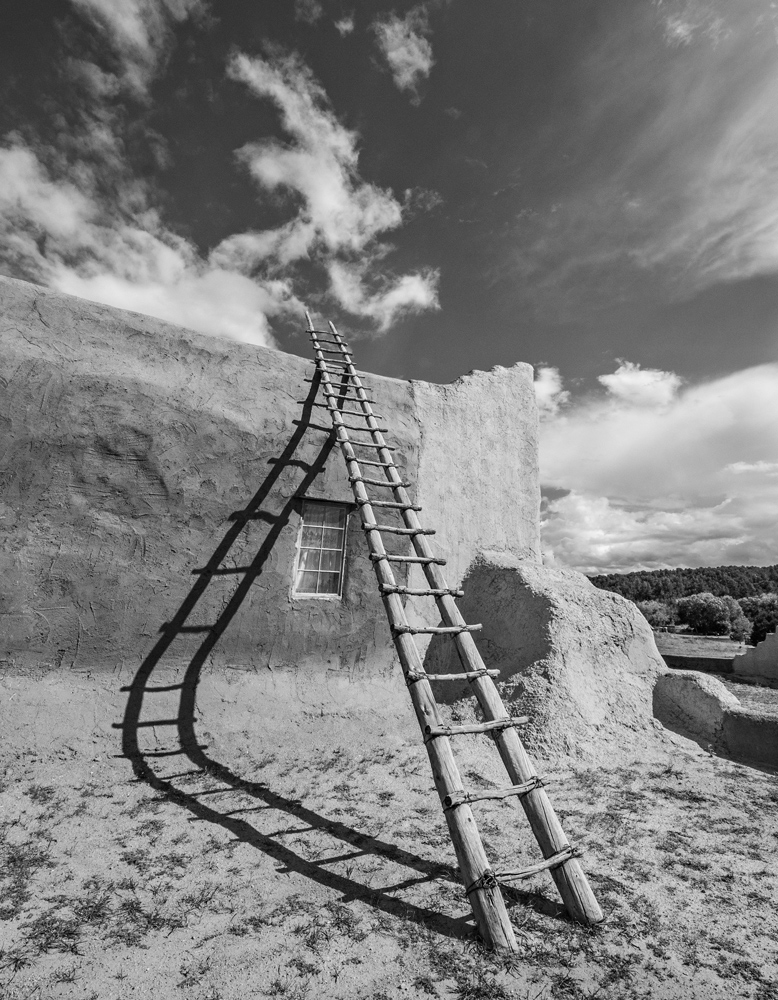
Personal Achievement
So far I have been talking about public achievements. Awards, grants, residencies, social media followers etc. are all public achievements. Everyone is aware of them and if they are not then marketing can be used to spread the word. However public achievements are not the only achievements that matter in art. A different type of achievement is those of a personal nature, achievements that others would not know about because they are private rather than public.
What if instead of seeking public achievements we sought personal achievements? What if we gave ourselves the right and the power of evaluating our own achievements, of granting recognition to ourselves? This may seem a strange thing to do. However, upon closer evaluation it makes a lot of sense.
Receiving awards, having a strong social media following, and getting public recognition for our work in one form or another are all valid forms of achievement. However, I find them lacking in many ways. So I want to propose an alternative: self-accountability instead of external accountability as a measure of artistic achievement. I want to propose this because it places the artist in charge of his achievements instead of letting someone else decide what is the significance of an artist’s work.
I propose measuring artistic achievement through personal actions, actions that are the result of our own doings, actions that do not require anyone else’s help to be performed. After all, one can work very hard at creating art, doing all the things I listed above, and not achieve public achievement. In fact, this happens regularly in the world of art resulting in frustration and potentially depression. This is unavoidable when we put other people in charge of measuring our achievements. On the other hand when we place ourselves in charge of measuring our personal achievement all we need is our own opinion, our own conviction, to decide if we reached the goals we set for ourselves and what we achieved with our work is significant. In that situation, our achievements are the outcome of our own evaluation, not the evaluation of others. (See footnote 1 below).
Reaching a personal goal is an achievement even if no one but ourselves knows about our desire to reach this goal. We can very well decide on a goal, create specific steps to reach this goal, set deadlines, and reach our goal without telling anyone about it.
So what do we use to measure artistic self-achievement? Because we are measuring our achievements by ourselves it makes sense that what we measure is defined by ourselves as well. This means what is used will be different for everyone. Therefore, instead of giving you a static list of items to consider I wrote a list of potential elements you may want to use. To not distract from the reading of this essay I decided to feature it in Footnote #1 below.
Delusion
Of course, a problem soon surfaces when such an approach is used. This is because an interesting aspect of evaluating our own achievements is that we can believe we have achieved our goals even though we are not getting recognition for having done so. This creates a conflict between our evaluation of our personal achievement and our level of public recognition. This conflict happens because achievement is personal while recognition is impersonal. Achievement is something we can measure ourselves while recognition is something other people have to measure for us. Achievement is something we can give to ourselves while recognition is something we are given by others.
This generates conflicting feelings which may at first feel strange but that after reflection and consideration can sound perfectly reasonable. What is bizarre can appear rational when emotions are involved, and emotions are definitely involved when we consider achievements and recognition for something which is, after all, a passion! I have no problem saying that at some point in my career I felt that my level of recognition was below my level of achievement or that, at an earlier time, my level of self-recognition was beyond my level of achievement. At the time it would have been fair to describe my level of achievement as being nothing. However, I personally felt I had broken new artistic ground. While self-delusion is an accurate description of what I experienced at that time I had no awareness of it. Such is the state of mind one finds himself in when dealing with endeavors motivated more by passion than reason, endeavors for which objective measures of success are elusive.
Self-Evaluation
This essay would be incomplete without a section on self-evaluation because my writing so far begs the question: how do I feel about my own achievements and recognition level? I will try to answer even though I know that doing so carries the risk of being either overwhelmingly pretentious or shockingly modest. I have after all achieved a satisfying level of financial success and my name is recognized at least within the confines of the fine art landscape photography world which, I agree, is a pretty narrow niche. However it is the niche I chose, hence another achievement I can list as having set my own path, controlled my own destiny, and carried on to my intended destination. A complex sentence to say that I decided to do what I like and succeeded in doing so. In other words, I am my own master even though saying this does entail a level of delusion, if only partial perhaps.
Amongst my achievements and recognitions in photography, I can list that I have sold my work profitably, that I have had many shows of my work, that I have received awards and accolades, that I have been published in print and on the web multiple times and that I have taught many students and passed on my knowledge to others.
And yes there are also things I have yet to accomplish. I could seek larger shows, bigger publishers, or wealthier clients and in doing so reap the level of recognition and achievement attached to doing such things. Yet I am not sure I want to do so, at least not all three, because I am happy living the life I live and seeking what may appear to be the next level of achievement and recognition may degrade this life by causing me to change or even lose what I have. Cultivate your garden said Voltaire and doing this has been my focus (See footnote 2 below). To seek more may be to seek what is other, meaning what is not me, and what is other is not what I want in my garden. Better try to grow better plants and improve my garden. I got where I am because I controlled my destiny and I seek to get to where I am going by continuing to do so.
In other words, reaching what some may consider being the next level of achievement and recognition may be more disruptive than productive. Why do so? More money and more fame do not necessarily bring more happiness, in fact, they may have the opposite effect. One of the truest statements I ever heard regarding art was told to me by Teddy Draper, a Navajo Artist who lives by the water tower in Chinle when he said ‘I am famous enough. Not too much and not too little.’ His words were not spoken naively. Being the uncle of the much more famous RC Gorman, Draper knew what international fame and high-level income bring with them. Recognition and achievement can turn against you and while both are challenging to control, prevention is preferable to cure. Just another challenge in what is indeed a difficult aspect of art.
What are true achievement and recognition for me? I want to propose that it is the development of a personal style. I also want to state that such is my personal endeavor at the time I write this essay. Did I develop a personal style already? Pretense would dictate that I have done so. Restraint would challenge this by saying I am on the way of doing so. Whatever the case might be such is my goal, whether done or on the way of being done. Art is, after all, a journey rather than a destination. A trip to regions unknown rather than a guidebook organized trip, a voyage of discovery, and a personal endeavor in every possible way.
Footnotes
1 – How do we measure art? How do we find out our level of artistic achievement? First, we need to set parameters for what we need to measure. Let’s start with a list of personal achievement in art:
– How different is our work from the work of other artists and photographers?
– Did we step out of our comfort zone to create this work?
– Did we take personal artistic risks to create this work?
– How much did our work evolve artistically since we started creating photographs? Here it is important to look only at the artistic aspect and not at the technical or salability aspects.
– Did we break any established rules when we created this work?
Art is about us so our artistic achievements should be defined by us. Defining our achievements means taking charge of our achievements instead of letting others take charge of them for us. In that spirit here are some elements to consider when evaluating your level of achievement in art:
– What have we accomplished in regards to artistic activities?
– Which artistic steps have we taken?
– Have we attended one or several workshops?
– Have we written essays about photography?
– If so, have we published our essays ourselves, on our blog for example?
– Or has our writing or essays been published by someone else on their website or printed publication?
– Did we teach a photography seminar or workshop?
– Did we have a show of our work, either group or personal?
– Do we have a website showing our work?
– Do we publish a blog?
– Did we engage in personal style development?
– Did we complete one or several projects?
– How far did we push our art in a unique direction?
– Have we been ourselves in our art?
2 – Voltaire’s statement is metaphorical meaning it stands for something else. Cultivate stands for taking care of and garden stands for oneself. Cultivate your garden can be loosely ‘translated as ‘take care of yourself’.’ This statement comes at the end of Candide ou l’optimisme. The book narrates Candide’s search for the El Dorado, a mythical place where gold is said to be commonplace. Candide searches the world over for it, finds a massive amount of it, but in a cruel twist of fate loses it all. After returning home he realizes that true wealth is internal, not external and that it is more important to take care of his own riches than to seek the riches of the world. Isn’t that what artists do? Isn’t that what art is about: to take care of our own internal riches by expressing in our art the beauty we see in the world?
Studying At Home With Alain Briot
The coronavirus situation has brought social distancing which forces us to stay home. I offer several ways for you to study without leaving home. First, you can refine and master your photographic skills with my Mastery Workshops on USB or DVD series. The Mastery Workshops focus on all areas of photography: processing, marketing, composition, etc. I have a 20 to 50% off offer, depending on how many Mastery Workshops you order at the same time. All the details can be found HERE. This link is also accessible from my home page.

Second, you can also study with my series of eBooks. These also focus on all areas of photography. Discounts are available if you purchase several eBooks at the same time. You can find information on these HERE.

About Alain Briot
You can find more information about my tutorials, photographs, writings, and workshops as well as subscribe to my Free Monthly Newsletter on our website. You will receive 40 free eBooks when you subscribe to my newsletter.
Alain Briot
April 2020
Glendale, Arizona
Author of Mastering Landscape Photography,Mastering Composition, Creativity and Personal Style, Marketing Fine Art Photography, and How Photographs are Sold. http://www.beautiful-landscape.com [email protected]





